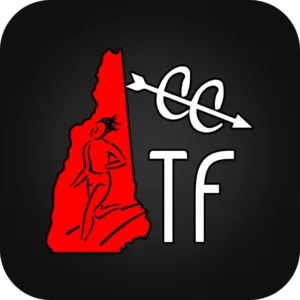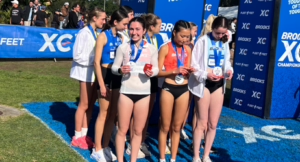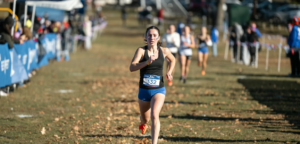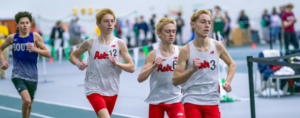By Mike Smith
There’s an old cross country adage that goes like this, “cross country is a summer sport that plays out in the fall”, or something like that. Which basically means that if you want to be as good as you can come championship season, you’d better be getting some mileage in during the summer. And I’d have to agree this is true.
So it’s not uncommon for coaches to set up summer running programs, with summer mileage goals and help inspire group runs. Some coaches even go so far as to create workouts for kids that they either administer themselves or do in group meetups. Some might even plot out on a calendar a schedule of progress, trying to squeeze as much improvement as possible over the summer.
I can’t do that. Maybe it’s because I’ve been teaching high school science for 23 years and that’s made me crazy. Could be because for the same time, I’ve been coaching cross country, indoor track and track and field, combining for somewhere around 60 seasons of coaching. Maybe it’s because I’ve always had a screw loose. Who knows, but when it comes to “extra” running opportunities, we often get a little creative.
I would be lying if I said I didn’t give them a plan. I do set them up with a calendar to help them outline their summer, mostly so the summer doesn’t get away from them without getting their miles in. But we count everything in minutes, and they are loosely structured so the athlete has more minutes as the summer goes on. There are three versions for the varying abilities of my athletes and it’s suggested they follow at least the progression of the schedule so they won’t get injured once the season begins. Round those minutes into miles and my top kids, and very few of them, might touch 60 miles a week right at the end, but these individuals are few and far between.
 We also have weekly runs planned for eight of the ten weeks of the summer. Monday night is “Monday Night Grind”, for an almost four mile run that includes our infamous Grinder hill workout. We also do an adult track workout on Wednesdays, and some kids simply to help keep in touch with their running will hop in and run some repeats with their aging parents. And Thursdays we host the Viking Run, a 5K run that mimics the Viking 5K course which is mostly on our cross country course. And while timed, most of my kids run comfortably, saving their “racing” on the course for when it matters.
We also have weekly runs planned for eight of the ten weeks of the summer. Monday night is “Monday Night Grind”, for an almost four mile run that includes our infamous Grinder hill workout. We also do an adult track workout on Wednesdays, and some kids simply to help keep in touch with their running will hop in and run some repeats with their aging parents. And Thursdays we host the Viking Run, a 5K run that mimics the Viking 5K course which is mostly on our cross country course. And while timed, most of my kids run comfortably, saving their “racing” on the course for when it matters.
But that leaves four days a week the athletes need to do their own running as a minimum. And let’s face it, when the temperature spikes it’s hard for anyone to convince themselves that going out and slogging around when the heat index is high.
So I also create and plan other running based events that do not conform to the usual constructs of summer training. Right after Meet of Champions is done, the following Monday we host a downhill mile while they still have all that speed in their legs so our youth movement and our aging athletes alike set their fastest mile times of the year.
We also started hosting three cross country races in a series we call “Club XC”. These races pitted our Valhalla running crew against teams from Hinsdale and Monadnock on three different courses in each of the school regions. Monadnock’s course ran up Mount Ceaser. Hinsdale’s was planned for a rail trail (but thwarted by severe weather) and ours was this convoluted loop with so many cutbacks, dips, humps, twists and varying terrain that it ran a lot harder than the 4.3 kilometers the distance identified.
But this weekend we held our coup de gras, “Barkley’s Baby. This contest is fashioned off a race in Kentucky in April where contestants run around a 20 mile loop five times looking for books hidden in the woods. They have 60 hours to do so and cover enough elevation to make it up Mt. Everest more than once. Our version, based around the school and my house is scaled down by half, with our competitors circumnavigating a 10 mile loop.
The event gets started the night before, when the race instructions are given and the map of the course is revealed. Contestants are allowed to take pictures of both. And while there are trails that can lead you to all the checkpoints, no one trail leads you to all the checkpoints. Athletes confer and contradict each other on the best route, landmarks, exact locations and route finding before the race begins the next morning. Some end up with an uneasy night of sleep.
both. And while there are trails that can lead you to all the checkpoints, no one trail leads you to all the checkpoints. Athletes confer and contradict each other on the best route, landmarks, exact locations and route finding before the race begins the next morning. Some end up with an uneasy night of sleep.
8am the next morning the horn sounds and this year 18 contestants headed out into the woods of New Ipswich to try their luck in finding thirteen books that make up the checkpoints on the course. Each contestant is given a page number and if they return with 13 pages, they’ll be recorded to have completed a lap. We had 16 return with their pages before the 6 hour time limit expired.
To be fair, most of our contestants come to do only one lap, which we call the warmup. Ten plus miles over the span of four hours of running and searching is enough adventure for them. Of the sixteen that completed the lap, only half of them returned to the course.
Of those eight, six completed lap 2. Half of them were content to call it at two laps, with three heading out and completing lap 3. All of them completed lap 3, with two electing to go out on lap 4, both completing that lap at 6:29am. And one headed out on lap 5, completing it (and himself) at 11:34am.
This year more than half the field are athletes on my cross country team. Five out of the six completers of lap 2 will be on the team. Three of the lap 3 completers are on the team, meaning all of the lap 4 and lap 5 completers are on my team as well. This year’s sole finisher, Ryan O’Shea (there have only been three in the four years we’ve been doing this), covered almost 58 miles and will be a senior on the 2022 team.
There is no prestige that goes with completing the Barkley. No prizes, no money, nothing but extreme exhaustion and the satisfaction of doing something big and something pretty much no one else does. I suppose there might be some bragging rights but good luck explaining exactly why you ran around in the woods for 28 hours accumulating almost 60 miles of running (or some version of running.) And as a coach, with cross country right around the corner, and the possibility of injury somewhat high, why would it be worth the risk?
 I think it might be summed up by one of the first statements that came out of Ryan’s mouth as we counted his thirteen pages and he finally was able to take a break knowing he would not be going out in the woods once we were sure he had his pages. He said, “I guess a 5K won’t feel that long ever again” and I suppose he’s right.
I think it might be summed up by one of the first statements that came out of Ryan’s mouth as we counted his thirteen pages and he finally was able to take a break knowing he would not be going out in the woods once we were sure he had his pages. He said, “I guess a 5K won’t feel that long ever again” and I suppose he’s right.
Running can be a boring sport. Lots of lonely miles logged, and with any luck the sport sticks, and long after the high school career ends, the miles keep stacking up. Toss in high heat indexes and wind chills, slippery roads, ankle rolling trails, and every other nasty condition Mother Nature can throw at you, there are many good reasons to spice things up.
Running’s not necessarily about winning, it’s about life. In both running and living there’s definitely a need to grind, to focus on the outcome and work carefully and diligently with the ambition to reach it. But there’s also a need to find the joy in a sport that is inherently mind numbing along with a need to push the boundary of what you might think is undoable.
The mind is the biggest roadblock to performance. The heart, the lungs and the legs can be trained by grinding away daily, but the mind is a different animal all together. All those solitary miles do wonders for your cardiovascular system, building capillaries, moving oxygen, flushing lactic acid. But they can detrain the brain. They can minimize what you do, grinding away piece by piece, until you’re unsure of what exactly you might be capable of. Things like the Barkley show someone what is possible.
And I’m happy to provide it to them.












2 Responses
Great writing and congrats to Ryan! Kid’s got guts!
Finding his footing for sure.